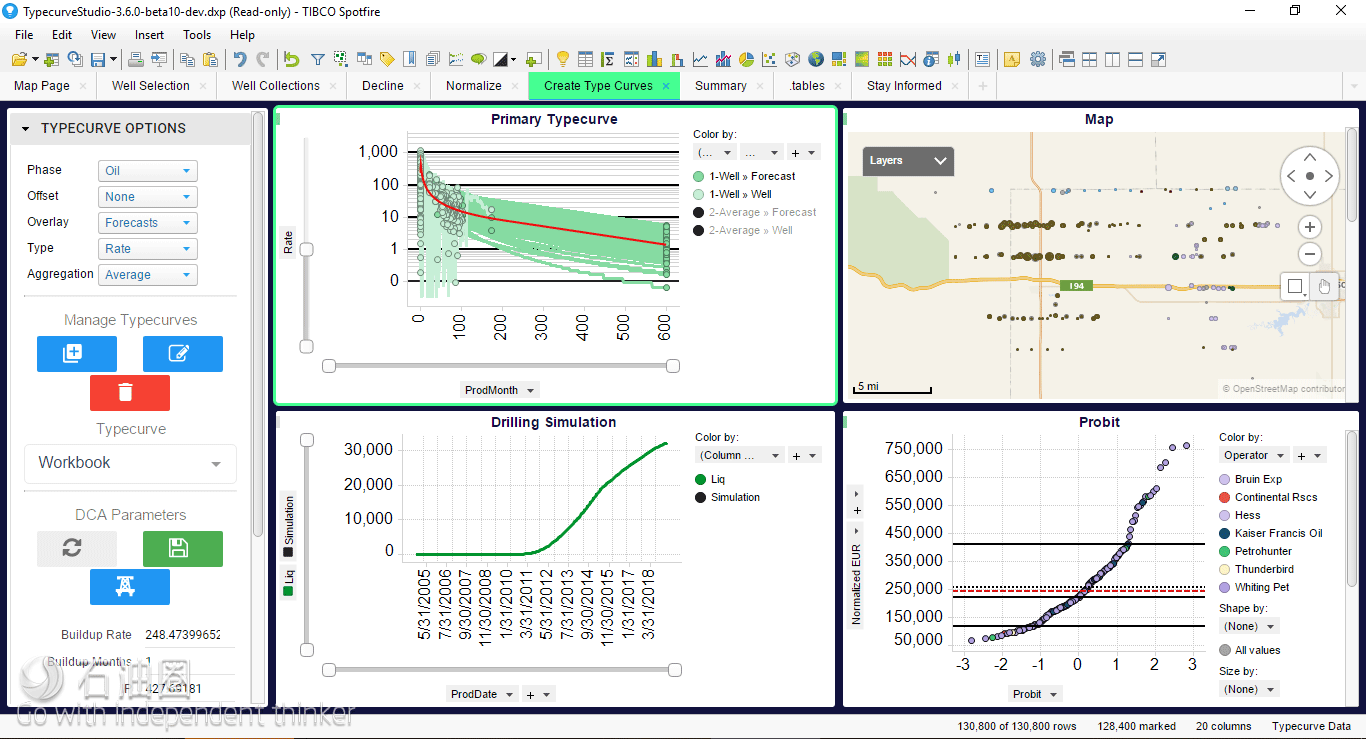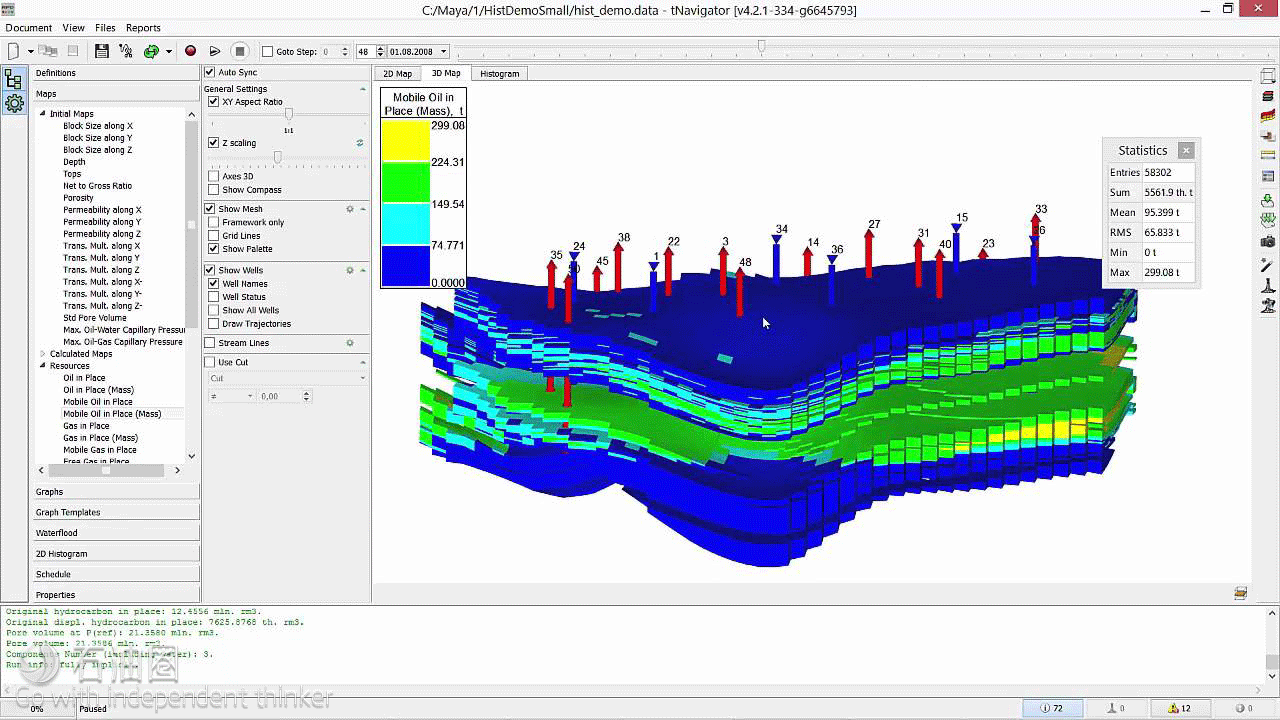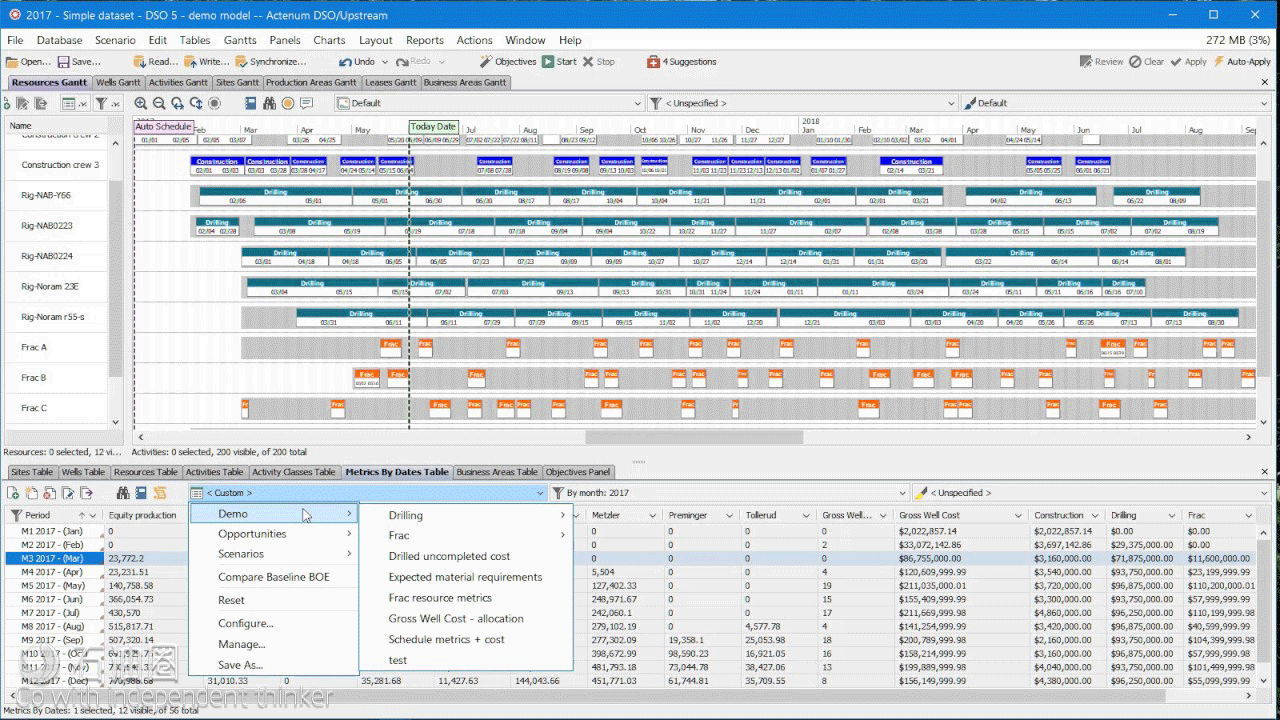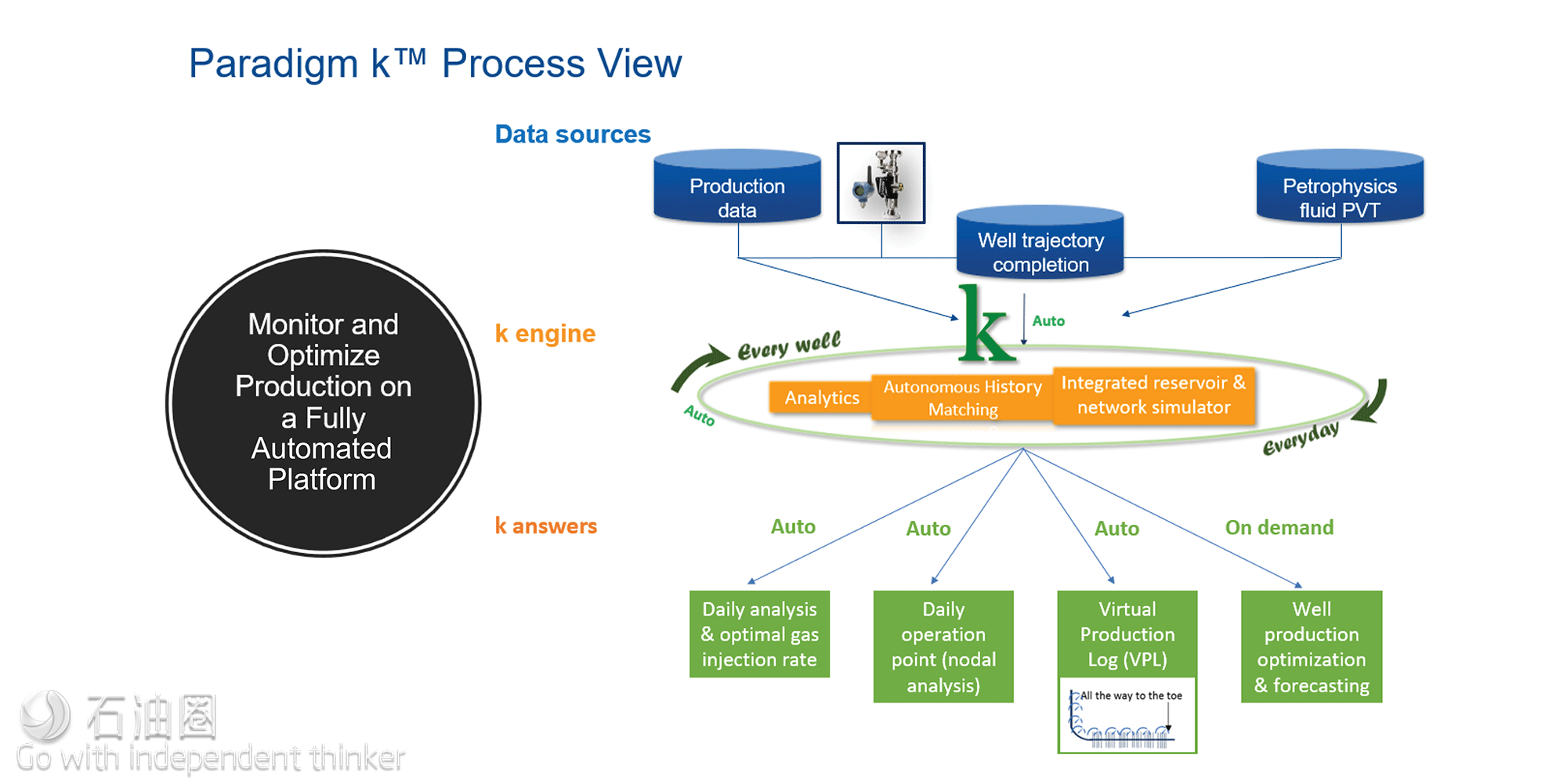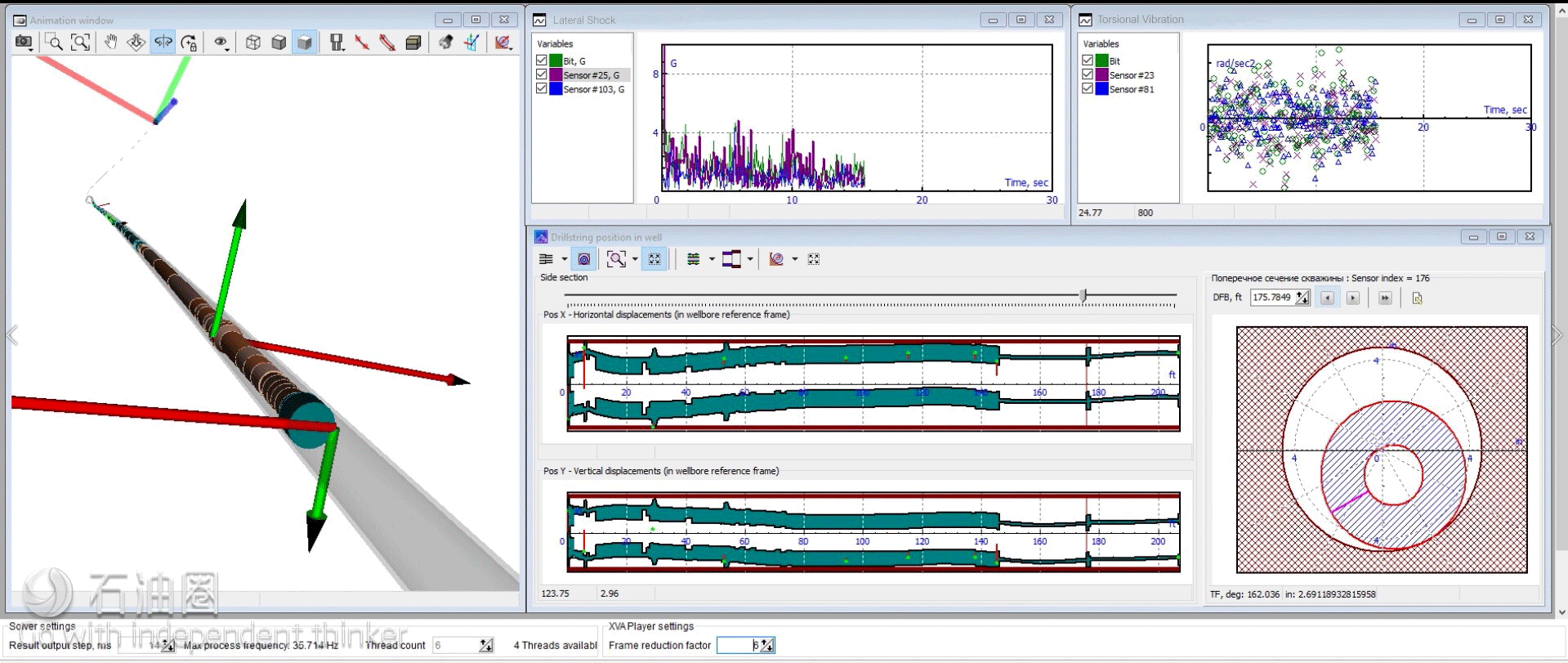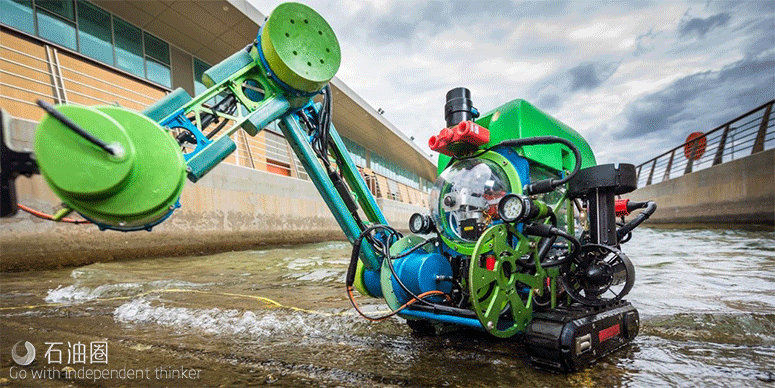Technology allows users to forecast wells, create type curves and value properties
Q Engineering will be showcasing its TypecurveStudio application and its latest release, BasinStudio, at ATCE. Q Engineering addresses processing limitations to unconventional reservoir engineering workflows by harnessing the power of Amazon Web Services. By unlocking cloud computing, Q Engineering has created fast and reliable forecasts of production data. This allows engineers and analysts to forecast wells, create type curves and value properties most efficiently. In an industry that faces Big Data limitations, Q Engineering strives to address these issues to allow users to forecast entire basins at a time to gain the most competitive operator intelligence in any area of interest. This technology allows users to make the most informed decisions in a particular play in the least amount of time.
Evaluate subsurface uncertainty
Resoptima removes the traditional limitations of reservoir modeling by unlocking the power of data to evaluate subsurface uncertainty. The company’s vision is that there is not just one view of the subsurface. The company’s technology is based on a methodology that enables geoscientists and engineers to continually create and recreate geological and reservoir models by testing uncertainties and assimilating them to collected data. Resoptima’s ensemble-based solution orchestrates static and dynamic modeling processes, bringing in all data to let users create, evaluate and reevaluate the reservoir in all the complexity a user sees. Powered by Resoptima technology, subsurface uncertainty is transformed by data and physics into actionable insights and measurable value.
Tool for integrated static and dynamic modeling from reservoir to surface networks
Rock Flow Dynamics’ comprehensive reservoir management solution, tNavigator, is a single program covering seismic interpretation, well correlation, geological modeling, fluid characterization, well modeling, reservoir simulation and surface network design. The program creates value for both conventional and unconventional assets. This means users deal with only one interface and only one point of data entry. This avoids extra work and makes learning easier. In addition, workflows can be put under the control of tNavigator’s optimization and uncertainty engine. These workflows can improve understanding of the interactions between the individual elements of the workflow. As an example, the impact of uncertainty in seismic velocity modeling on water handling capacity can be determined easily in a single workflow in the same program using robust physics quickly. Answers to this question on water handling capacity can help to avoid the need for expensive retrofitting of surface facilities.
Get answers about reservoir model behavior in just a few mouse clicks
In a world as technically intricate as the oil and gas industry—when billions of dollars of revenue are on the line—reservoir engineers must be confident that they have predicted the behavior of complex systems with reasonable accuracy. Experts in the field of reservoir behavior analysis are frequently asked to compare reservoir simulation datasets of a single oil field, interpret those data and determine whether the projections are reasonable or make recommendations on a plan of recovery. The results are complex and diverse, making it difficult to compare and validate results with reasonable accuracy. Tecplot RS is a reservoir simulation visualization and analysis tool for oil and gas reservoir modeling that is able to load data from many different sources. The program supports all major reservoir simulators and has streamlined “Smart View” processes to get reservoir engineers their answers in just a few mouse clicks.
AI software builds and optimizes complex scheduling of well delivery resources
Actenum will be featuring its integrated well delivery scheduling and artificial intelligence (AI)-powered optimization software, Actenum Upstream, at ATCE. For operators, well delivery scheduling is a complex and critical process with substantial economic impact. Done well, it maximizes the efficient use of costly resources and yields substantial economic benefits. Done poorly, consequences can be severe—deferred production, cycle time delays and increased costs are but a few of the outcomes. Despite its importance—and surprisingly, in view of its complexity—well delivery scheduling is often done manually using unsophisticated software tools. Actenum Upstream uses AI to build and automatically optimize complex scheduling of well delivery resources, aligning schedules with business objectives. It overcomes the limitations of manual scheduling with capabilities that include comprehensive scheduling logic, a robust, well-based data model and teamwide schedule visualization. These tools enable operators to maximize project collaboration and efficiency, shorten cycle times, reduce risk and achieve predictable and reliable production.
A digital twin for every unconventional well
A new generation of physics-based models enables the attainment of a digital twin for every unconventional well. It is deployed in the cloud to monitor, process and history-match large volumes of data at “rest” (archived) and “in motion” (live data from sensors) in real time. It models the reservoir, wellbore and surface network as one entity and features artificial intelligence-boosted automated history match that refines its predictive capacity further with time. It enables production optimization throughout the connected wells’ life cycles with additional features, including production bottleneck identification, automated gas-lift optimization, virtual metering and virtual production logs. Unlike drilling and completion operations, which have recently experienced significant efficiency gains, production optimization has lagged due to the effort and time required to model production with physics-based models, hence reliance on empirical models for almost all wells. Paradigm k alleviates that with a fast and easy-to-use model specifically tailored for unconventional reservoirs.
Digital well engineering platform
RiMo is a digital engineering platform that consumes critical data and leverages artificial intelligence (AI) and machine learning driven-data visualization to develop unique solutions to service companies and operators alike. MindMesh has successfully unlocked and combined physics and mathematical modeling to deep machine learning principles to create digital twins that quickly can enable companies to run more efficiently, safer and economical. The company’s drillstring dynamics functionality allows drilling engineers to leverage analysis for static, directional tendencies, critical speed and, most importantly, time-domain analysis. The RiMo well engineering platform can use be used for the design of soft and stiff string and hydraulics. Mind- Mesh’s workflow process has enabled companies that are in any stage of building their team.
AI for oil and gas
In an environment of prolonged volatility and price compression, unconventional operators are focused on optimizing field development economics. OAG Analytics is a software suite that enables collaborative, data-driven optimization for some of the most expensive decisions in the upstream life cycle, including well spacing, sequencing and landing zone. Addressing the criticality of data quality, OAG Data Manager ensures the right data are ready for analysis by breaking down data silos and providing quality control for a cross-discipline master database. Out of the box, OAG provides artificial intelligence (AI) applications to predict missing rock properties, optimize a section, perform predictive maintenance and frac hit feature engineering. In addition, data scientists and subject matter experts are able to create and share applications specific to a program with in-house developed algorithms. OAG can optimize well spacing, quantify geo parameter impact on production and integrate to Spotfire.
Accelerate workflows with a cloud-based technology platform
RS Energy Group (RSEG) provides a high-speed, scalable and adaptive software platform called RS Prism. This technology enables faster data processing and can run analytical queries on billions of rows of data in milliseconds rather than hours or days, uncovering patterns and hidden insights for rapid analysis and decision-making. The comprehensive and accurate assessment of RSEG clients’ most critical strategies— involving operational optimization, evaluating potential acquisition targets, competitor surveillance, benchmarking and other key capital allocation decisions—can be performed in seconds. All RSEG solutions reside in this single platform. RSEG’s solutions combine public operational, financial and geological data with 20 years of RSEG’s intellectual property (IP), advanced analytics and applied data science/machine learning models. The merging of this technology and RSEG’s analytics/ IP allows RSEG clients to streamline their daily workflows across asset teams, strategy and planning, investor relations, executive management and others.
Rise of the robots: enhancing operational efficiency while reducing risk and costs
Robots, science fiction’s go-to, no longer represent the frontiers of automation. The future is now, as Saudi Aramco harnesses robotics as a foundational element of the company’s digitalization strategy, able to capture and process data and make asset management more efficient in extreme conditions. Developed by Aramco’s Research & Development Center, the Shallow Water Inspection and Monitoring Robot, or SWIM-R, is equipped with sensors to conduct visual underwater pipeline inspections, clean marine life growth with a water jet and take ultrasonic thickness readings and cathodic protection voltage measurements in up to 10-m (33-ft) depth. The compact robot easily circumvents physical hazards that can limit a diver’s access; it also can navigate currents and crawl along the seabed. The only robot of its kind, SWIM-R has 10 patents and has been licensed for global commercialization.
Machine learning technology for well curve prediction
Analytics Ready LAS (ARLAS) uses machine learning algorithms to fill in gaps in log curves and calculate the curve response of missing log runs. With as little as one curve, ARLAS can predict an entire quad-combo suite allowing users to see data where they didn’t exist before. Machine learning technology benefits significantly with access to large amounts of sample or training data, and TGS has the largest commercial library in the world from which to learn. Machine learning models improve and data outputs achieve higher accuracies with each iteration. ARLAS accuracy is well above 90% due to more than 75 different machine learning models calibrated for each basin with TGS’ vast data library. For example, TGS has more than 316,000 LAS immediately available in the Permian Basin alone, seven times more than other providers. This results in high-quality predicted quad-combo suites across the entire basin.
Technology provides efficiency of up to 96%
WAGO’s new Pro 2 Power Supply Series is the new industry communication and parameterization standard. With six power supply units ranging from 120 W to 960 W, the Pro 2 Series provides an efficiency of up to 96%. These new power supplies permit easy fieldbus connection via modular type communication modules and incorporate an interface that can be tailored to any application. With combined exceptional highpower density with excellent efficiency, the Pro 2 Series has performanceenhancing Top- Boost, which delivers 600% extra output current and a PowerBoost that provides an additional 150% output current for 5 seconds. The high power density of the WAGO Power Supply Pro 2 allows significant space savings in the control cabinet. The digital twin concept saves time and money from the very beginning—from planning to installation to operation— over the course of many years.

 石油圈
石油圈
